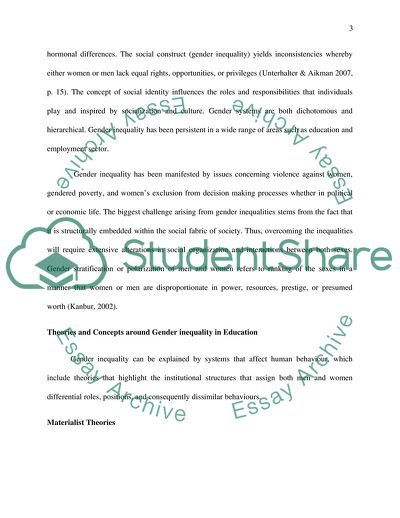Cite this document
(Key Developments around Gender Inequality in Education since 1960 Essay Example | Topics and Well Written Essays - 2000 words, n.d.)
Key Developments around Gender Inequality in Education since 1960 Essay Example | Topics and Well Written Essays - 2000 words. https://studentshare.org/gender-sexual-studies/1772680-outline-key-developments-around-gender-inequality-in-education-since-1960-how-have-changes-influenced-current-debates-and-our-understanding-of-boys-and-girls-education-performance
Key Developments around Gender Inequality in Education since 1960 Essay Example | Topics and Well Written Essays - 2000 words. https://studentshare.org/gender-sexual-studies/1772680-outline-key-developments-around-gender-inequality-in-education-since-1960-how-have-changes-influenced-current-debates-and-our-understanding-of-boys-and-girls-education-performance
(Key Developments Around Gender Inequality in Education since 1960 Essay Example | Topics and Well Written Essays - 2000 Words)
Key Developments Around Gender Inequality in Education since 1960 Essay Example | Topics and Well Written Essays - 2000 Words. https://studentshare.org/gender-sexual-studies/1772680-outline-key-developments-around-gender-inequality-in-education-since-1960-how-have-changes-influenced-current-debates-and-our-understanding-of-boys-and-girls-education-performance.
Key Developments Around Gender Inequality in Education since 1960 Essay Example | Topics and Well Written Essays - 2000 Words. https://studentshare.org/gender-sexual-studies/1772680-outline-key-developments-around-gender-inequality-in-education-since-1960-how-have-changes-influenced-current-debates-and-our-understanding-of-boys-and-girls-education-performance.
“Key Developments Around Gender Inequality in Education since 1960 Essay Example | Topics and Well Written Essays - 2000 Words”. https://studentshare.org/gender-sexual-studies/1772680-outline-key-developments-around-gender-inequality-in-education-since-1960-how-have-changes-influenced-current-debates-and-our-understanding-of-boys-and-girls-education-performance.


